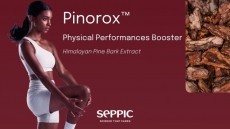Aker deploys drone to improve efficiency, add to ecosystem data collection

The drone, called a Sailbuoy, was developed over a period of years by Offshore Sensing, a company that spun out of Bergen, Norway-based Christian Michelsen Research in 2015. The drone is designed to operate independently almost indefinitely.
Drone designed for long-term, independent operation
The 2-meter-long, 60-kg vessel is constructed of fiberglass, carbon fiber and stainless steel. David Peddie, CEO of Offshore Sensing, said it’s a self-righting design that is well suited to the harsh Southern Ocean environment where Aker will use it.
Even in the most extreme storms in the region, where wind speeds can top 70 mph and wave heights can reach 30 feet or more, Peddie said the drone can hold its own. And with its onboard solar panel array, it can generate enough power to operate even in cloudy conditions.
“In storm conditions it will keep station and not sail against or with the wind,” Peddie told NutraIngredients-USA. “It has solar panels to power the electronics and it will run indefinitely on these. Power does not limit the mission length, but biofouling, wear and tear and damage will.”
The drone is equipped with an echo sounder and environmental sensors. Communicating via an Iridium satellite hookup, the vessel will transmit data in real time on the location and size of krill swarms, local water conditions and other factors.
Drone will act as scout
The drone’s initial primary function will be to help Aker’s harvesting vessels find suitably dense krill swarms more efficiently. Krill (Euphasia superba) is a free swimming, shrimp like crustacean that forms the basis of the Antarctic food web. The animals are harvested both for use as feed for farmed fish and as the raw material for krill oil omega-3 dietary supplements.
The species is abundant in the waters around Antarctica, but it is not evenly distributed. Burning fuel in the search of swarms of harvestable size is one of the costs that must be managed in this inherently high cost operation. Aker, which has its headquarters in Oslo, Norway and has an extraction facility in Houston, TX, operates its krill fleet out of a port in Uruguay.
In other forage species fisheries in more temperate regions, such as sardines or menhaden, the use of small spotter planes to guide fishing vessels has long been the norm. Deploying small, single engine fixed wing aircraft to the areas off the Antarctic Peninsula, where the Aker fleet operates, is impractical both because of distance and the frequent storms.
And aircraft, even small ones, burn fuel, too. The sail drone concept will allow Aker to improve its operational efficiency while at the same time lowering its carbon footprint, said Runa Haug Khoury, Director Sustainability and Public Affairs for Aker. And it will help the company expand its data collection efforts to help guide the decisions of the fisheries managers at the multinational group CCAMLR (Convention for the Conservation of Antarctic Marine Living Resources).
Adding to the data on the ecosystem
“The key objective of the Sailbuoy is to help our vessels find krill more efficiently. We also see great opportunities in the drone’s ability to systematically collect other ecosystem and weather data, not only of use to Aker BioMarine, but also of value to scientists, authorities and NGOs engaged in strengthening the knowledge base on Antarctica,” she said.
“We see that drones like the Sailbuoy, providing real-time estimates of stocks, are becoming important tools towards developing a more dynamic fishery management regime for krill in Antarctica. Aker BioMarine is investing significantly into science partnerships to assist with this development,” she said.
“As a company, we are dedicated to sustainability leadership within fisheries more broadly. Our ambition is to be a driver for a more transparent, data-driven fishery management regime for krill in Antarctica,” Khoury concluded.
Khoury said Aker intends to add to its Sailbuoy fleet, though a specific number of additional drones has not yet been decided.
Lifespan of drones
Peddie said his company has a number of years of testing in on the operation of the Sailbuoy, but the Southern Ocean is a dangerous place, so the ultimate realistic lifespan of the drones in Aker’s application has yet to be determined. Testing has shown that the drone does not seem to resemble a prey item in the eyes of predators, so attacks from killer whales or leopard seals has not been an issue. But there are other dangers out there, he said.
“The sea is a harsh environment and there are many dangers for this vessel including crashing into ice in a storm, getting swiped by the tail of a whale or getting caught in floating debris. We have, however, logged many years of mission time, and the survivability is quite good,” Peddie said.
On the show floor
Aker BioMarine will highlight more information on its krill oil ingredients and its sustainability efforts at Booth 4675 on the upcoming Expo West trade show in Anaheim, CA.
















